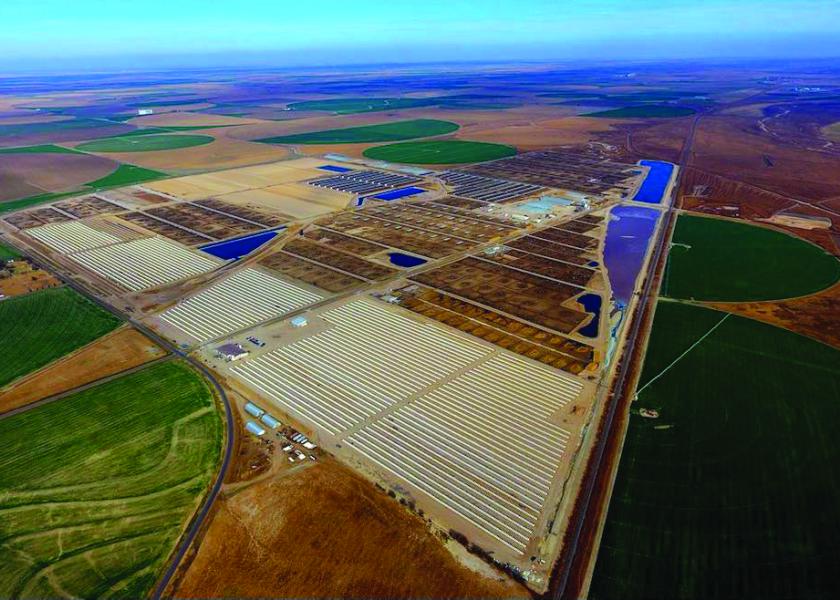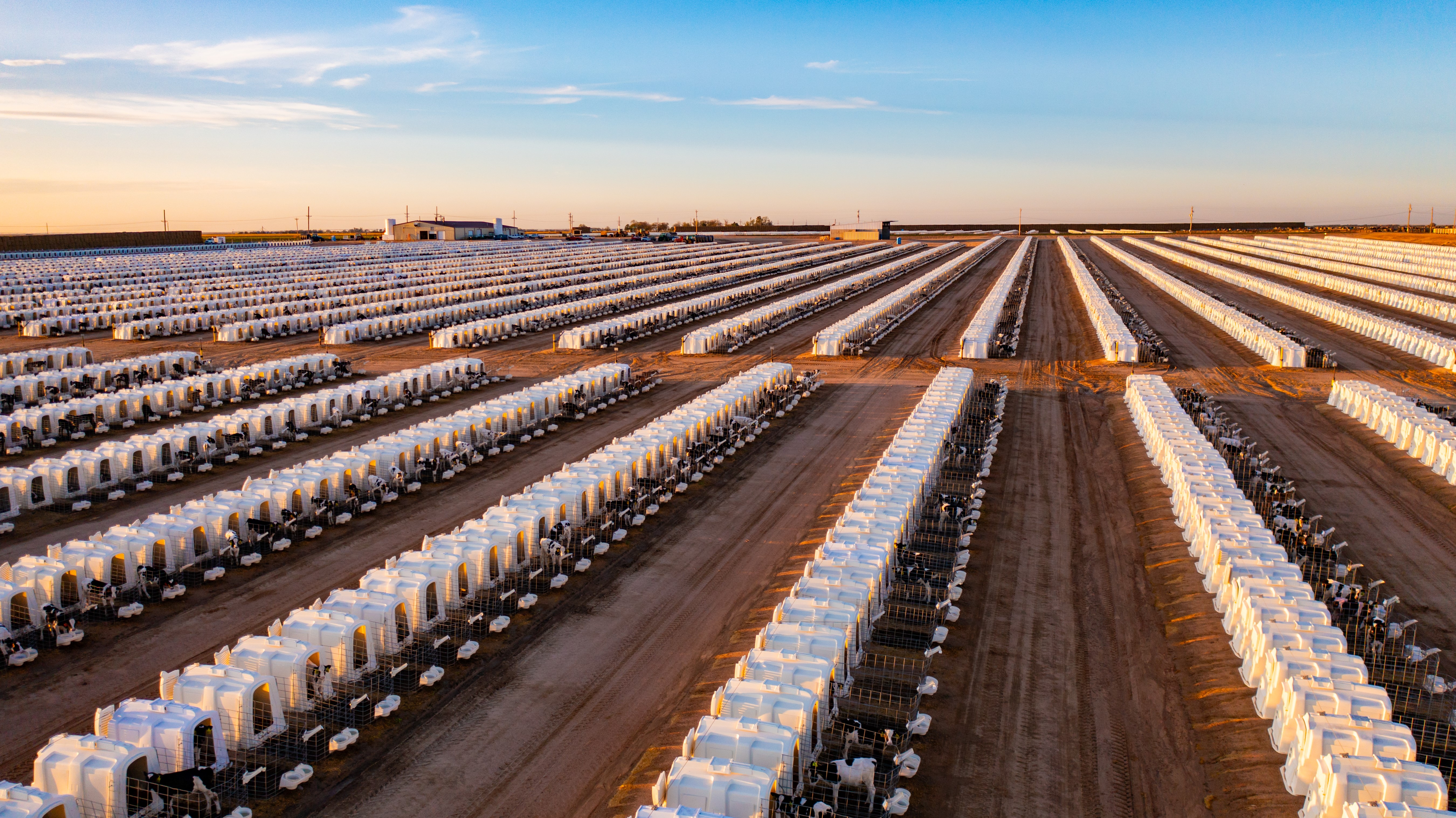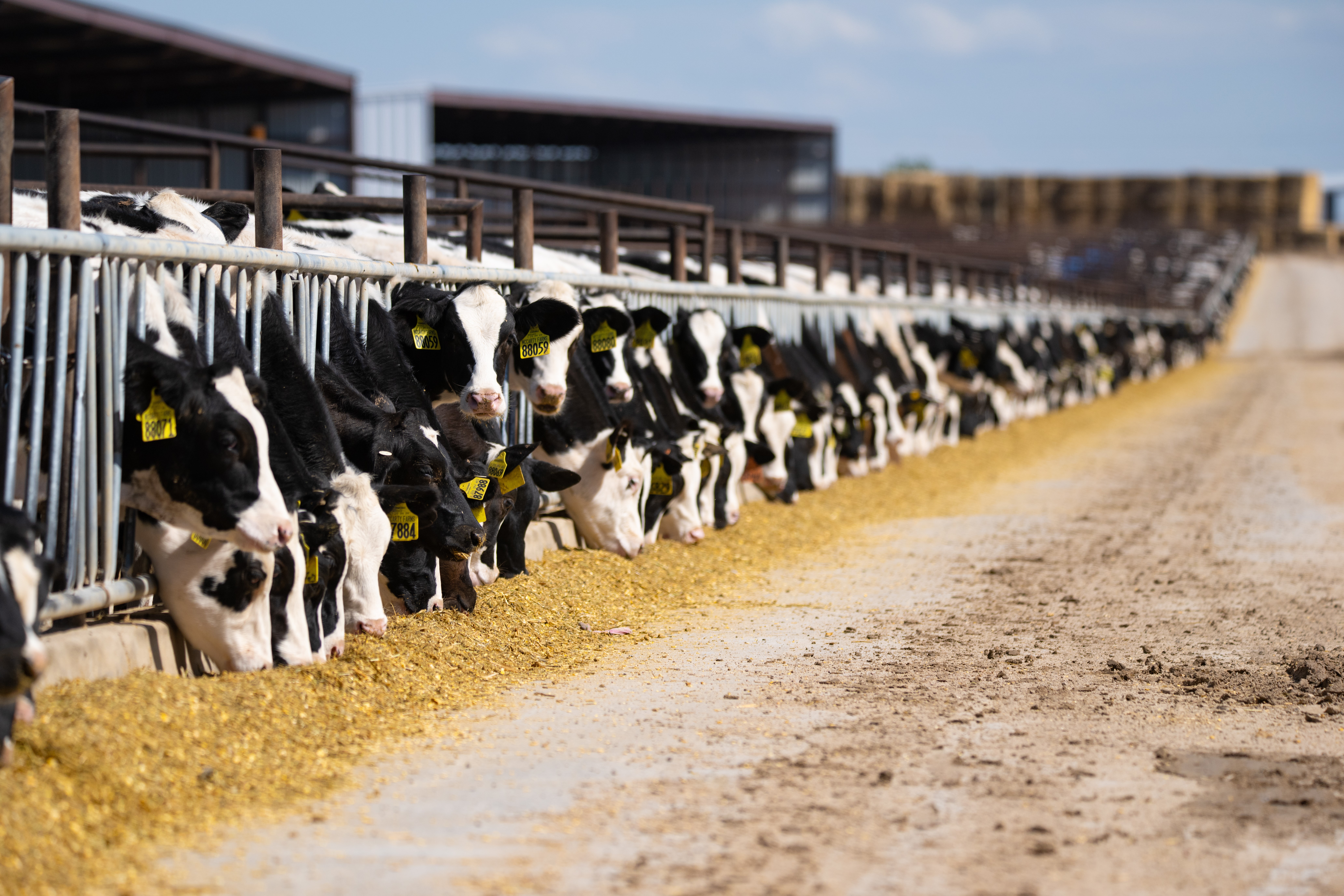Success is All in the Details at Kansas Dairy Development

With heifer inventory at the lowest numbers in decades, raising a heifer calf for 20-plus months to become a productive milk cow is more important than ever before. While many producers take the liberty to raise their own calves and heifers, more producers are increasingly looking to heifer growers to lend a helping hand.
KDD Heifer Ranch
Head to Deerfield, Kan., and you’ll find one of the leading calf and heifer growers in the country. Kansas Dairy Development (KDD) debuted in May 2018 after checking all the right boxes, including securing the right location that would be conducive to animal agriculture, with good access to feed, water and labor. KDD is a contract-growing facility, that provides temporary housing for up to 80,000 head of cattle — from a few days old to springers nearly ready to calve. And, according to Jason Shamburg, the organization’s co-founder and CEO, their formula for success is all in the details, as he shares there is no silver bullet on how to successfully raise calves at a high level.
“We’re always looking for any advantage that we can to move the needle any small increments, but I think by and large, day in and day out, it’s absolutely about our team of great people,” he says. “It’s about consistency, it’s about animal husbandry, it’s about cleanliness. It’s about just kind of tenaciously doing the right things day in and day out every day.”

Their team of 200 employees is tasked with many jobs to provide the best care possible for all the cattle. KDD has three divisions: hutch area with employees caring for calves from day one to day 90; the transition area has employees focusing on calves 91 to 180 days old. Some calves will leave KDD then. Nearly 60% stay there through the heifer development phase (180 days to approximately 600 days), which is their third division.
KDD has clients in 10 states, including Florida, Georgia, Indiana, Iowa, Kansas, Michigan, Minnesota, New York, South Dakota
and Wisconsin.
Day One Onward
On average, calves arrive at 3 days of age and are quickly offloaded once they arrive at KDD and put into a well-bedded Agri-Plastics hutch with a warm 3-quart bottle of milk.
“This is our No. 1 thing,” Shamburg says. “Grain and water are in front of them day one on. They receive two, 3-quart bottles of milk daily until 50 days old and then one 3-quart bottle from day 51 to day 65, as they gradually are weaned off milk and on a full-grain and water diet.”
Transition barns are broken into 30'x90' pens with a 4.25% slope from the back to the front of the barn.
“We bed heavy underneath the roof line seasonally, based on need,” Shamburg explains, noting that barns are equipped with back curtains that can be raised and lowered based on weather conditions.
Calves transition to a ‘windbreak and shade pen’ for the last 30 days that is designed to provide extra protection from wind and moisture. Heavy bedding is also provided, but Shamburg notes that heifers have more square footage and are exposed to a bigger group of animals and become much more self-sufficient.

Once calves hit 180 days of age at KDD, they are housed in an open lot corral, and the focus is for them to stay healthy and on a steady growth curve.
“They are growing around 2 lb. for an average daily gain until they would get moved over to the breeding area around 330 days,” Shamburg says, where they enter into a breeding synchronization program.
Individual weights are taken coming out of the hutches (out of transition), again at prebreeding and when they go home. KDD puts together a comprehensive set of monthly reports sent to clients that summarize all the information.
Data Driven
“We capture health data, breeding information, pen movements, gain/performance, etc.,” Shamburg says, noting the work overseen by their staff nutritionist, Kevin Miller, Ph.D.
“He oversees all of our nutrition work from the milk diets and breeding diets and is just extremely good at gathering and summarizing data,” he says. In addition, our staff veterinarian, Dr. Jared Schenkels contributes a lot of health information.”
All the data is entered through handheld systems into DairyComp, and clients can track aspects of daily performance. Shamburg says they use both a dairy and a feedlot software program for administrative and accounting purposes.
“It takes a couple of different programs to make it work,” he says.

The High Plains region includes a lot of great neighbors who help each other out. Therefore, KDD can focus its time and effort on caring for and raising youngstock while their neighbors grow feed for them as well as use their manure.
“We have formed great relationships with our neighbors for feed, and they are growing corn silage, sorghum silage, triticale silage, along with alfalfa,” Shamburg says, adding they have access to growers who also provide corn stalks and wheat straw, for the bigger heifers in their calf and heifer raising operation, as well as bedding for their younger animals.
“We are incredibly fortunate to have great dairy clients and the team of people that we do,” Shamburg says, sharing that for their employees, it is more than a job, it is their career. “They take pride in what they do, and we absolutely couldn’t do it without the great team, as well as the great partners that we have.”
Tackling extreme Kansas Weather challenges
A true testament to just how great KDD’s staff is was on Jan. 8, 2024, when southwest Kansas was hit by 65 mph winds, snow and freezing temperatures.
“You couldn’t see past the hood of your pickup for 11 hours straight,” Shamburg says. “For the better part of two weeks, we dealt with harsh weather, and our crew never skipped a beat. They worked from early morning hours well into the evening and always in good spirits.”
During this uniquely challenging time, Shamburg says all the calves were tucked in and well bedded and in result faired very well during this tenacious period.
“I credit a lot of this to our amazing staff, but also to the infrastructure we’ve invested in,” Shamburg says, highlighting the fact that Southwest Kansas is a great place to raise cattle. “I do feel like we have taken a higher-quality approach for the dairy producers who are very committed to their animals and very much recognize the value and return on investment in receiving excellent heifers back home to their operations.”
Come rain or shine, or even during a massive winter blizzard, KDD is steadfast with the same commitment to their employees and cattle.
The most important ingredient to success is people with pride in what they do, Shamburg notes.
“Our KDD staff is second to none when it comes to dedication and work ethic,” Shamburg says. “We do believe we have a very strong family-oriented culture with a strong team. It shows in the performance of the animals, through the care we provide.”







